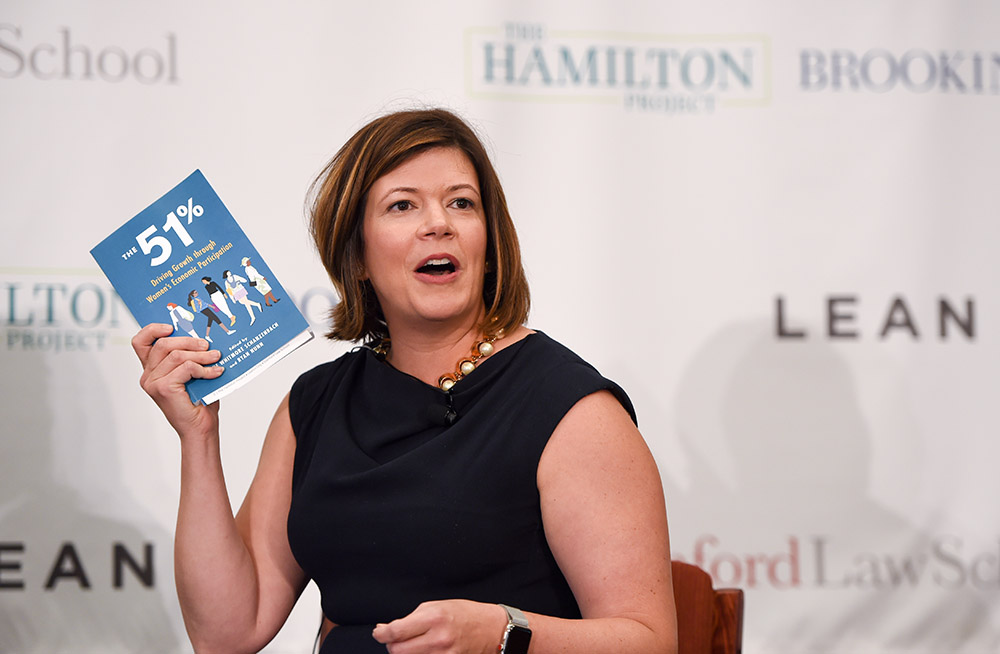The 51 Percent
New book highlights women’s role in labor market and policies to improve it
Get all our news
Evidence-based policies aimed at enhancing women’s economic outcomes would provide a boost to the economy through increased productivity, labor force participation, and demand for goods and services”
Diane Whitmore Schanzenbach
IPR director and the Margaret Walker Alexander Professor

In conjunction with the book's publication, IPR Director Diane Whitmore Schanzenbach participated in a forum exploring public policies to promote women's economic opportunity.
Over the course of the 20th century, more American women received college degrees and worked than ever before, adding an estimated $2 trillion to the nation's economy. Still, the U.S. economy has room to grow and will only reach its full potential if women are able to fully participate in the labor market, according to a new book co-edited by economist and IPR Director Diane Whitmore Schanzenbach. In The 51 Percent: Driving Growth Through Women’s Economic Participation (The Hamilton Project, 2017), researchers propose evidence-based public policy reforms aimed at addressing the structural problems in the economy that are holding women back.
Unlike in other developed countries, the U.S. economy has seen a drop in women’s labor-force participation since 2000. Large gaps remain between men and women in the jobs they hold, the wages they earn, and their overall economic security.
Schanzenbach and two colleagues contributed the first chapter that traces women’s participation in the U.S. labor force since the middle of the 20th century. They demonstrate that the number of women working jumped dramatically between 1962 and 2000, but since then, the growth in women’s labor force involvement has stagnated and reversed.
Countries in the Organization for Economic Cooperation and Development (OECD) have not experienced a similar decline in the numbers of women who work. Schanzenbach and her co-authors—Sandra Black of the University of Texas at Austin and Audrey Breitwieser of The Hamilton Project—suggest that U.S. policies and labor-market institutions have played a role.
These policies include rigid rules at many workplaces and the failure to adopt maternity leave, which are at least partially responsible for the decline in women’s labor participation and the continuing gaps in jobs, wages, and economic security between men and women in the workplace, according to the book’s other policy papers.
The heart of the book consists of policy proposals “to support women from career through retirement” and “to address the needs of caregiving women.” These include expanding access to paid sick leave, parental leave, and childcare, and promoting fair scheduling and pay transparency.
“Evidence-based policies aimed at enhancing women’s economic outcomes would provide a boost to the economy through increased productivity, labor force participation, and demand for goods and services,” Schanzenbach said.
The 51 Percent: Driving Growth through Women’s Economic Participation, ed. by Diane Whitmore Schanzenbach and Ryan Nunn. Hamilton Project, 2017.
Diane Whitmore Schanzenbach is IPR director and the Margaret Walker Alexander Professor. She directed The Hamilton Project from 2015–17.
Photo credit: The Hamilton Project
Published: January 29, 2018.